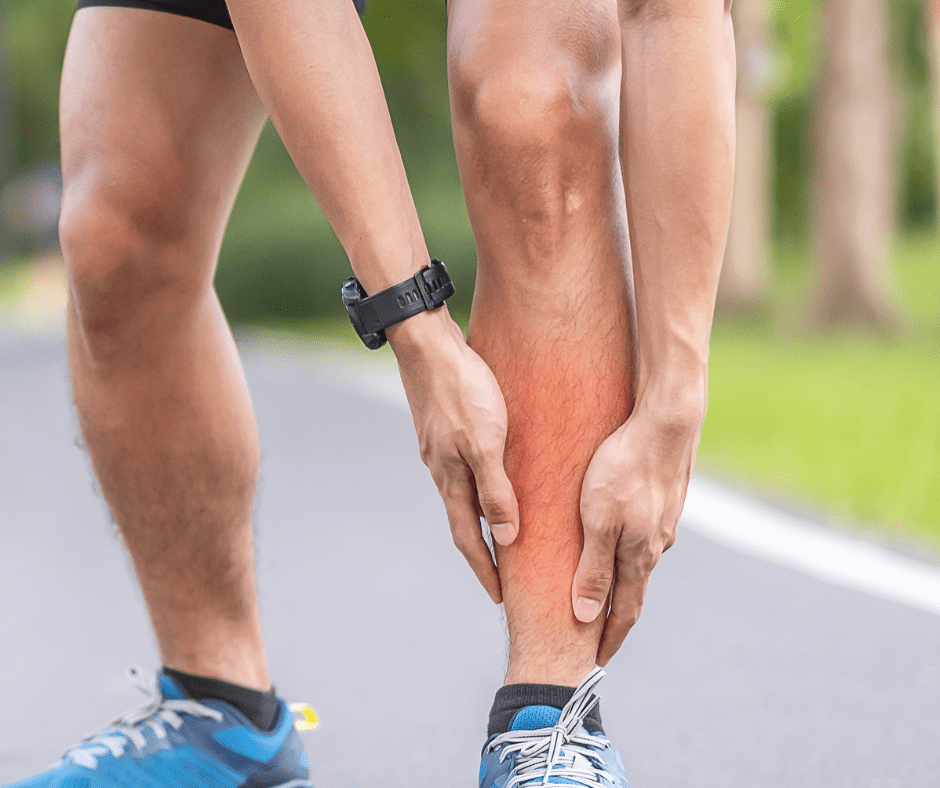Whats is the cause of hamstring strains?
The Anatomy of the hamstrings
The hamstring anatomy is complex with a large amount of anatomical variability. It is characterised by overlapping tendons and structural interrelations between the individual hamstring muscles. The hamstring can be broadly characterised by the terms medial and lateral hamstrings. The medial hamstring consists of the semimembranosus and semitendinosus and the lateral hamstring consists of the biceps femoris. The deeper semimembranosus has an oval footprint that originates lateral to the conjoint tendon of semitendinosus and biceps femoris. It has a long membranous tendon that travels medially from its origin and the greatest bulk of the muscles is towards the knee thus is perhaps more important in controlling knee flexion. The semitendinosus arises directly as muscle fibre from the ischial tuberosity and forms and arises from the conjoint tendon. The conjoint tendon has an oval footprint on the medial ischial tuberosity and the semitendinosus also travels medially on top of the semimembranosus. The semitendinosus muscle bulk is greatest at the hip becoming more of a superficial tendon atop the semimembranosus as it travels to the knee, appearing like the cherry on a cake in a cross-sectional ultrasound scan. The semitendinosus is perhaps more important in hip extension.
The biceps femoris has complex anatomy. Vleeming suggests from his dissections that 6 of 10 biceps femoris muscles bypass the ischial tuberosity and arise directly from the sacrotuberous ligament. It is subdivided into a proximal long head that also arises from the conjoint tendon and travels laterally down to the knee, and a distal short head that arises halfway down the thigh from the femur by abroad aponeurotic origin and forms T junction with the long head. It has a varied pennation angle throughout the muscle belly and tendon length. The long head of biceps femoris is believed to more fast twitch, and like the semimembranosus has more of its muscle bulk towards the knee. Due to its fast twitch nature it is more of a peak force muscle. The long head is innervated by the sciatic nerve whereas the short head is innervated by the common peroneal nerve and is believed to be more of a slow twitch muscle. This suggests it’s best suited as a postural muscle and responds to sustained isometric force and loaded more with high volume as compared to the long head. Therefore, it is important to strengthen the hamstring in both the hip extension and knee flexion component with different tibial rotations and foot positions.
Mechanism of hamstring injury
Hamstring muscle injuries have been reported as the single most common injury in professional football, and highly prevalent in AFL, basketball, cricket, rugby union and the NFL. The mechanism of hamstring injuries is highly variable. Most occur during a game rather than in training, and predominantly at the end of each half, thus are fatigue induced.
There are broadly two types of hamstring injury
- High Speed running which is the most common mainly affecting the long head of biceps femoris, typically at the proximal MTJ.
- Movements leading to excessive lengthening such as high kicking / sliding tackle / sagittal split. These often involving the free proximal tendon of semimembranosus close to the ischial tuberosity and have a prolonged rehab time.
In kicking sports, the dominant leg is injured slightly more than the non-dominant leg with the most prevalent mechanism of injury is sprinting 20-30 meters in a straight line (66% of them occur at running speeds >7m/s.). It has been reported that 80% of all hamstring injuries occur in proximal biceps femoris at terminal swing phase / at heel strike. This involves weight bearing with the knee in slight flexion and the hip flexed. At this point there is a concentric action at the knee and eccentric action at the hip. 70% of these injuries are a grade I or less
There is a high recurrence rate after injury within the first month of return to play so this is the most high risk period for any athlete and some researchers have demonstrated the risk remains high for up to 1 year post injury.
Hamstring injury risk factors
- Sports that involve sprinting or overstretching
- Older than 23 years old, this doesn’t take into account training age
- Previous hamstring injury – for 1-2 years there is a 35% risk of re-injury
- Concomitant joint injury of lumbar spine, hip, knee, foot or ankle
- Lack of strength
- Poor flexibility (not a significant risk factor)
Flexibility
Much gets made of flexibility and injury risk, especially tight hamstrings. Flexibility to a large extent is genetically determined. Heat improves flexibility as does stretching. Regular stretching can add about 10 degrees to your range of movement, however this decreases as stretching stops. Therefore, as most hamstring injuries occur in the muscles mid-range flexibility is not so important.
Function of hamstrings
The hamstrings along with the glutes, adductor longus and adductor magnus provide forward propulsion during running. The hamstrings are most important to produce the highest speed levels (>9m/s). The hamstring also decelerates the lower limb in terminal swing in preparation for initial contact.
Injury prevention
Functional movement screening for injury prevention / performance enhancement is popular in sport. However, the validity of these movement screens remains to be thoroughly investigated. However, correcting muscle imbalance in athletes clearly reduces injury and improves performance. Of 462 elite football players tested in the preseason by Crossier et al (2008), 53% were balanced, 47% were found to be imbalanced (in terms of quads and hamstrings ratios).
Strength imbalances
- 40% of players had bilateral differences on concentric strength.
- 60% of players had bilateral differences in eccentric strength.
- 87% of players had poor hamstring to quads ratios.
Injury frequency
- 1% of players with no pre-season strength imbalance sustained a hamstring injury.
- 5% of players with an untreated pre-season strength imbalance sustained a hamstring injury (a 4-fold increase in risk).
- 7% of players with a pre-season strength imbalance provided a programme to correct imbalances suffered a hamstring injury (significantly reduced risk)
Askling et al (2003) studied 90 elite Swedish football players and divided them in to 2 groups. Group 1 received no additional strength training whereas group 2 received 16 sessions of specific hamstring training, once every 5 days for 4 weeks, then once every 4 days for 6 weeks. Training consisted of 4 sets of 8 prone leg curls on a Yo-Yo device. The prone leg curl group showed a significant increase in both concentric and eccentric strength compared to the control group; a significant increase in 30m speed and a significantly lower number of hamstring injuries.
Arnason et al (2008) introduced a 5 week period of gradually increased training load, after this players performed 3 sets of Nordic hamstring eccentric exercises (one at 12 reps, one at 10 reps and one at 8 reps). Teams were asked to use these exercises three times a week in the preseason and once to twice a week in season. Hamstring injuries were 65% lower in teams that performed the eccentric exercise programme. In contrast stretching during warm up and flexibility training of the hamstrings had no effect on the incidence of hamstring strains.
Injury treatment: rehab stages
Stage 1: the first 48 hours – offload, rest, compress, crutches – minimise scar tissue development. The more scar tissue development the greater the risk of re-injury.
Stage 2: all about the inflammatory process and tissue healing. Game Ready compression and muscle stimulation. Sherry and Best’s trunk loading and frontal plane hamstring mobilisation. Using biologics and injectables such as Traumeel or PRP may also be useful.
Stage 3: regain vertical force production / max force production – calf raises, ¼ squats, hamstring isometrics. Blood flow restriction training.
Stage 4: get specific adaptation in the hamstrings to run at >7m/s and produce torque and frequency in the hamstring and hip flexors. Unilateral loading, eccentrics, outer range loading, tendon loading. Nordics don’t correlate to speed and force for sprinting. The primary component to speed is the ability to produce vertical force which in turn translates to stride length. This comes primarily from the quads and calfs. This should sustain high-speed running above 7m/s. Above 9m/s the hip torque is produced by the hamstrings and hip flexors. This generates 10,000N of force at high speeds with very high angular velocities at the knee, Nordics generate 373N with much lower angular velocities thus this is not enough force generation and conditioning for running fast.
Stage 5: reintroduce controlled return to run / sprinting and build tolerance to speed.
Stage 6: return to training / play
Stage 7: return to performance
References
Arnason, A. Andersen, T. E. Holme, I. Engebretsen, L. and Bahr, R. (2008). Prevention of hamstring strains in elite soccer: an intervention study. Scand J Med Sci Sports 2008: 18: 40–48.
Askling, C. Karlsson, J. and Thorstensson, A. (2003). Hamstring injury occurrence in elite soccer players after preseason strength training with eccentric overload. Scandinavian Journal of Medicine and Science in Sports. 13 (4): 244-250.
Croisier, et al (2008). Strength Imbalances and Prevention of Hamstring Injury in Professional Soccer Players. The American Journal of Sports Medicine. 36(8): 1469-75.




